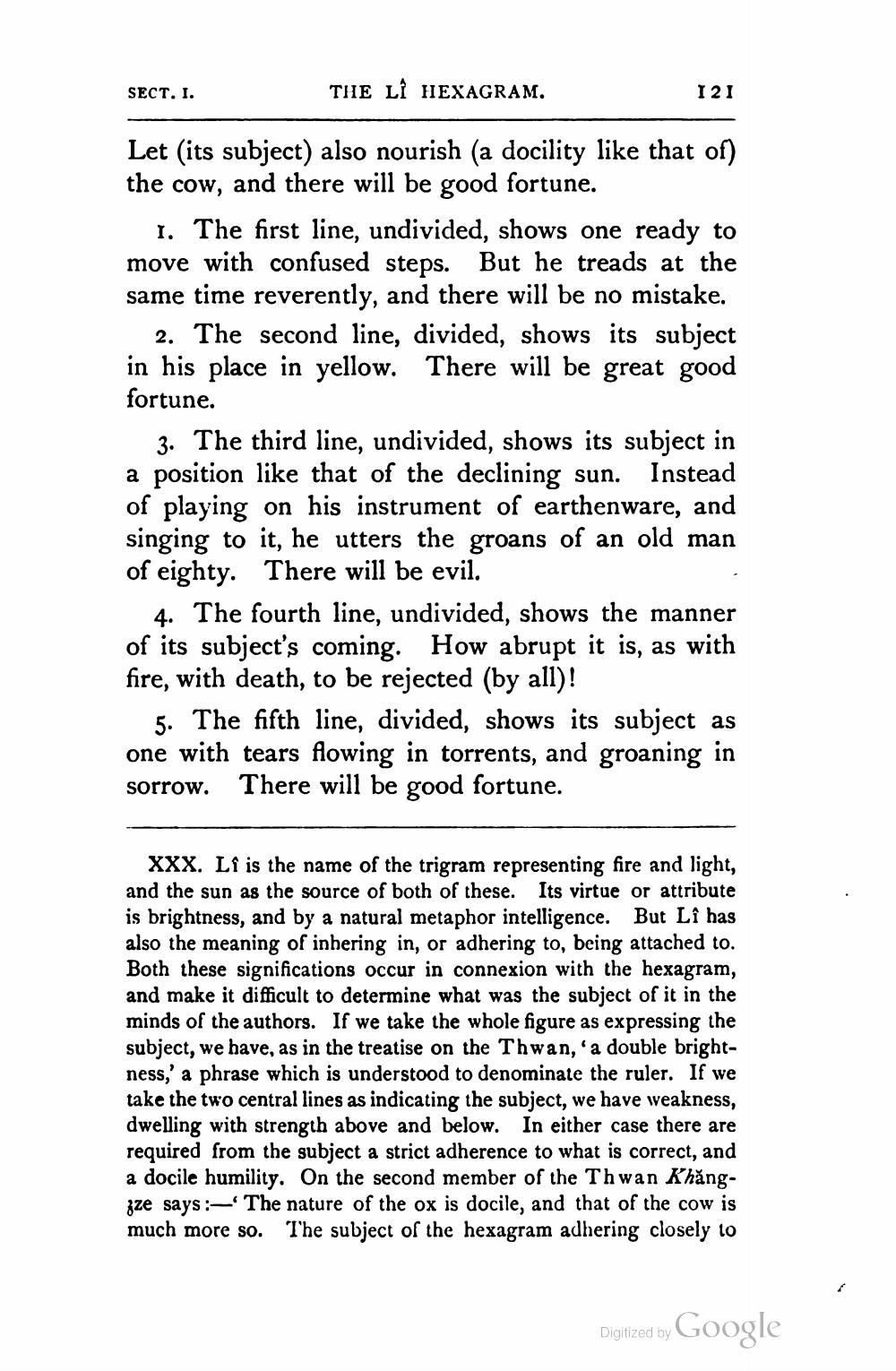________________
SECT. I.
THE LÎ HEXAGRAM.
I 21
Let (its subject) also nourish (a docility like that of) the cow, and there will be good fortune.
1. The first line, undivided, shows one ready to move with confused steps. But he treads at the same time reverently, and there will be no mistake.
2. The second line, divided, shows its subject in his place in yellow. There will be great good fortune.
3. The third line, undivided, shows its subject in a position like that of the declining sun. Instead of playing on his instrument of earthenware, and singing to it, he utters the groans of an old man of eighty. There will be evil.
4. The fourth line, undivided, shows the manner of its subject's coming. How abrupt it is, as with fire, with death, to be rejected (by all)!
5. The fifth line, divided, shows its subject as one with tears flowing in torrents, and groaning in sorrow. There will be good fortune.
XXX. Lî is the name of the trigram representing fire and light, and the sun as the source of both of these. Its virtue or attribute is brightness, and by a natural metaphor intelligence. But Lî has also the meaning of inhering in, or adhering to, being attached to. Both these significations occur in connexion with the hexagram, and make it difficult to determine what was the subject of it in the minds of the authors. If we take the whole figure as expressing the subject, we have, as in the treatise on the Thwan,'a double brightness,' a phrase which is understood to denominate the ruler. If we take the two central lines as indicating the subject, we have weakness, dwelling with strength above and below. In either case there are required from the subject a strict adherence to what is correct, and a docile humility. On the second member of the Thwan Khăngze says: The nature of the ox is docile, and that of the cow is much more so. The subject of the hexagram adhering closely lo
Digitized by Google




